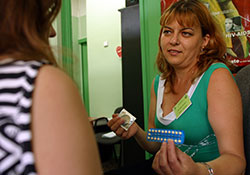Contraception

WHO
Contraception and the right to choose when to have children are at the centre of reproductive health. Contraception use varies across the European Region. In some countries many women who need modern contraception do not get it. They may have to cope with poor services, difficult access, high cost, custom and other cultural factors and many countries have a high unmet need for contraception and this has a greater impact on women's health and well-being across the life-course.
Unmet need is defined as the percentage of women who are fertile and sexually active but are not using any method of contraception and who report that they either do not want any more children or wish to delay the next child. Data shows that the contraceptive prevalence has increased from 2000 to 2015, going from 55.6% to 61.2% respectively. However, unmet family planning need differs widely across the Region from 5% to nearly 23%.
What can we do?
WHO/Europe has assisted countries in developing an evidence-based approach to family planning and the introduction and adaption of WHO guidelines. This was done in collaboration with the United Nations Population Fund (UNFPA), the International Planned Parenthood Federation (IPPF), European Network, European Society of Contraception and Reproductive Health (ESC), the United States Agency for International development (USAID) and other organizations. In recent years these activities have taken place regionally and in Armenia, Kyrgyzstan, Turkmenistan, Ukraine and Uzbekistan.
Contraceptive prevalence and the unmet need for contraception are both used as indicators to measure progress towards the Millennium Development Goals. It is considered "unfinished agenda" in reaching universal access to sexual and reproductive health and right (SRHR) is included in the Sustainable Development Goals (SDG) 2015-2030.



